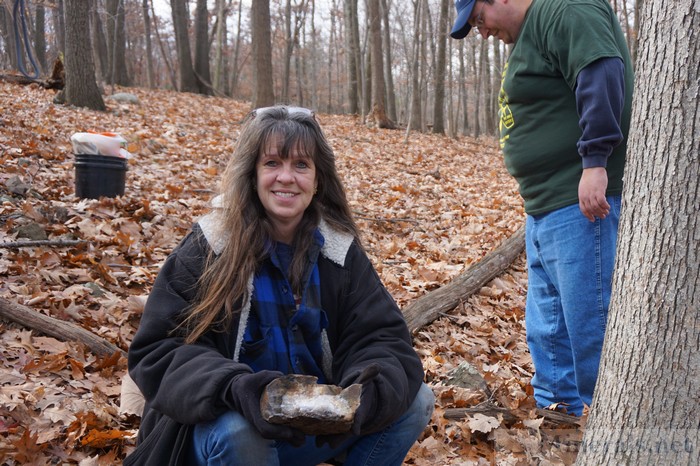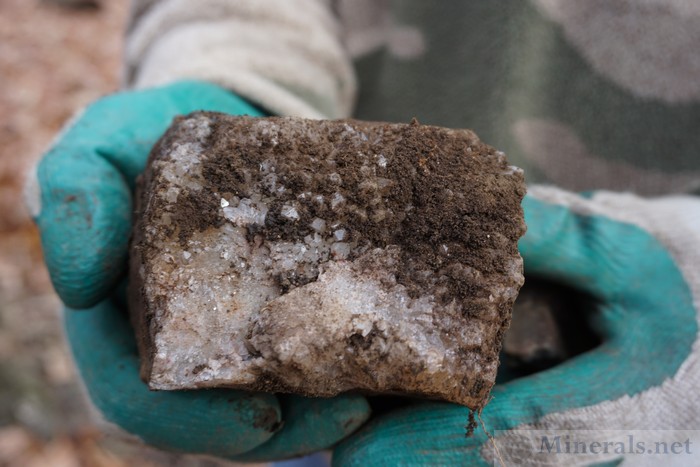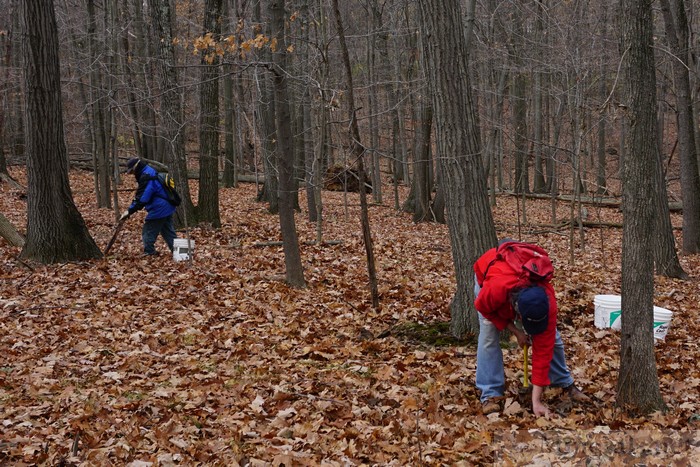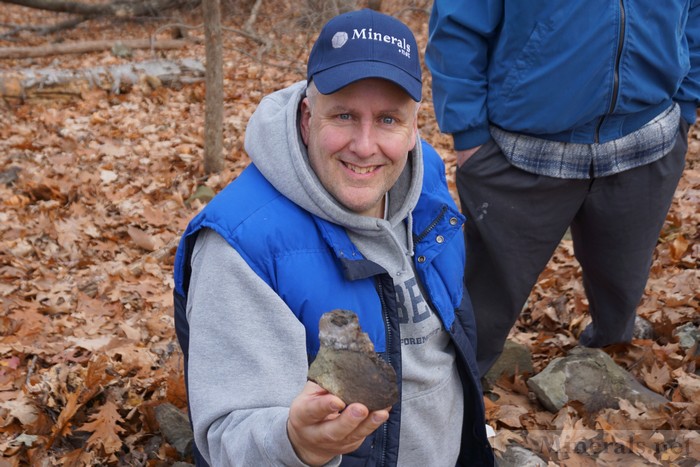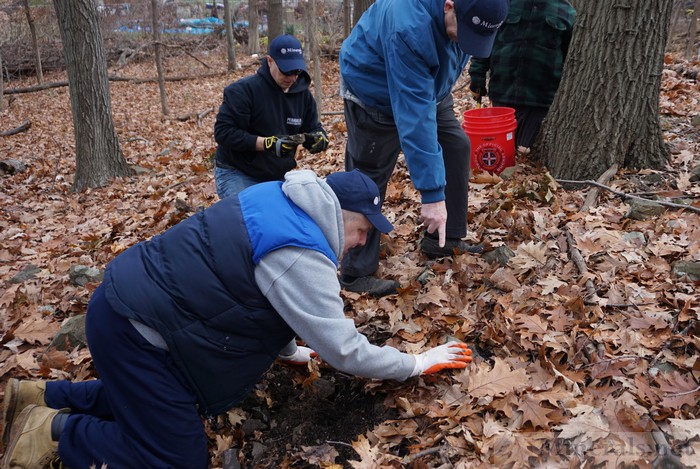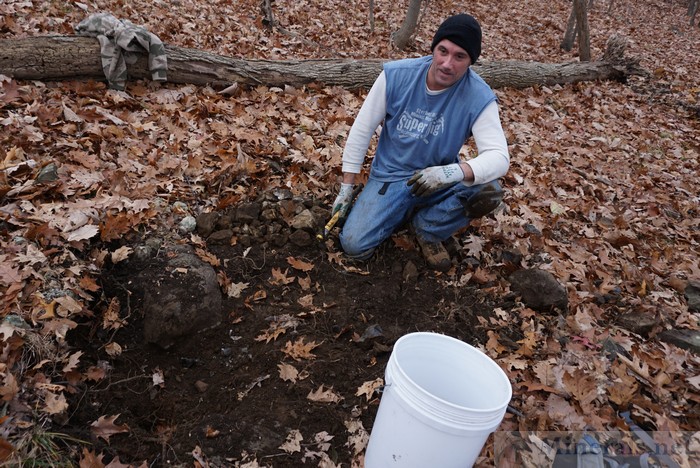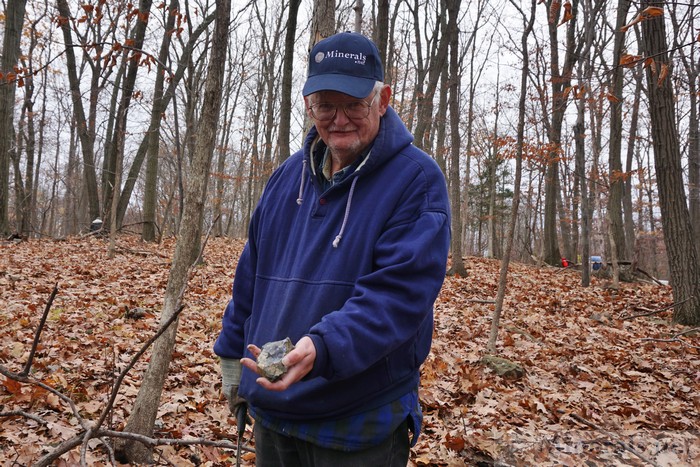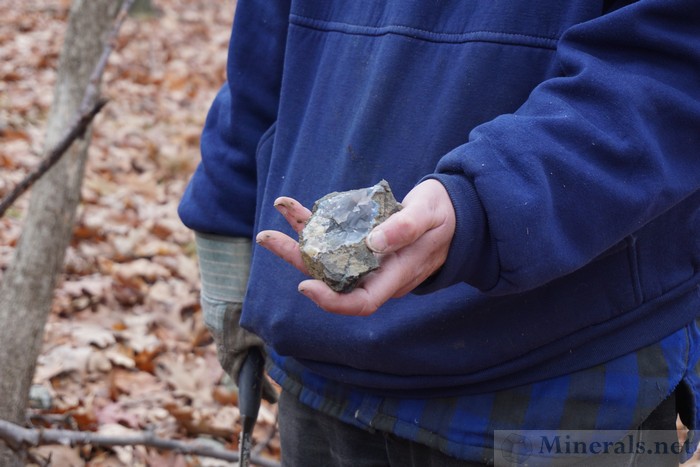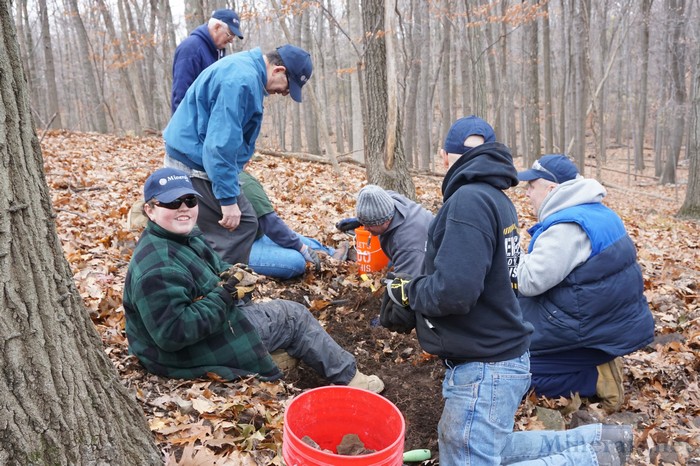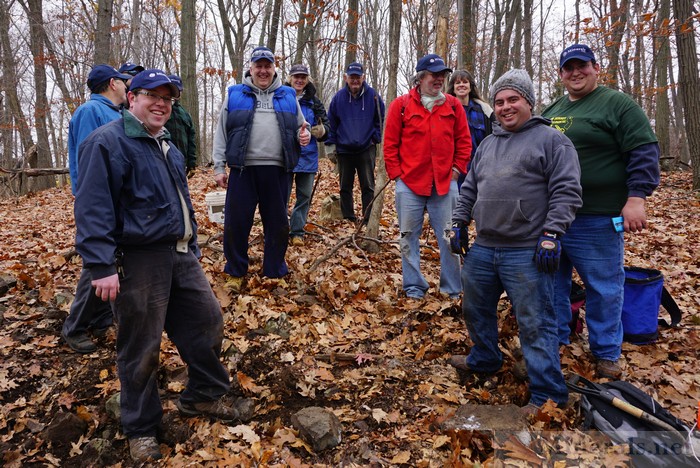This past November, Minerals.net sponsored a field trip for the North Jersey club to an Agate deposit in Suffern, New York. Jeff Wilson and Dave Shapiro, the field trip coordinators of the North Jersey club, had been working with me to arrange a trip to the site, and, finally, we were able to coordinate a date and time. I had to secure trespassing access from the land owner and neighbors. This was not an easy task, but we did get everything coordinated successfully.Only at the end, after a very successful collecting adventure, did we run into trouble with one of the neighbors as we were walking back to the staging area.
The Agate deposit is located in about 20 miles north of New York City, in a light suburban region with many forested areas. This deposit is wooded, and the earth was never excavated or disturbed. The mineralized zone is mostly restricted to a small basalt hill, with the Agate and Quartz found at the foot of the hill, along the slope, and along the top of the hill. The bedrock is loose with many fragmented rocks, and slight digging or overturning rocks will often lead to a quartz or agate zone within the basalt host.
I first discovered this deposit in 2009 while exploring the woods in the basalt zone and noticed an Agate lying among basalt fragments surrounding a tree. The deposit is quite unique in that it doesn't lie in an excavated quarry or dug area. The minerals are found directly in native bedrock and broken stones, especially around large trees which popped through the bedrock. One can pick any area on the hill, clear the leaves, and be likely to find an Agate or Chalcedony zone.
The host bedrock is a formation known as the Ladentown basalt. It is a small and isolated outcropping of basalt located in the northern part of Suffern, Wesley Hills, and Pomona, in Rockland County, New York. The Ladentown Basalt is actually a continuation of the Watchung Mountains of New Jersey, well-known for the famous traprock deposits such as those in Paterson and Prospect Park that have produced world-class Prehnite and zeolites.
The primary mineral of importance at the deposit is Agate. The Agates are mostly white and gray, with nice banding zones, with occasional light blue and reddish-brown colors. Some of the Agates have an outer layer of crystalline Quartz, usually white but often also yellow. An occasional light color tint of light blue, light green, light pink, and amethystine have also been found. Recently some nice sparkly drusy Quartz plates have been extracted, with a layer of brown Jasper underneath. Translucent gray Chalcedony is also fairly prevalent, as well as botryoidal white Chalcedony. White rhombohedral Calcite is also found at the deposit, with some of the crystals dissolved leaving over empty crystal casts. Possible empty Anhydrite casts have also been found.
Our scheduled trip visit was November 22. The weather was very seasonal for November, and conditions were dry, making for good collecting. At first, finds were very sporadic, but as everyone grouped together in different areas, some excellent Quartz and Agate specimens were found. Below are pictures from the dig. I hope to post photos of actual Agates that we found once I finish cleaning and photographing them. Click the pictures to see an enlarged pop-up.

